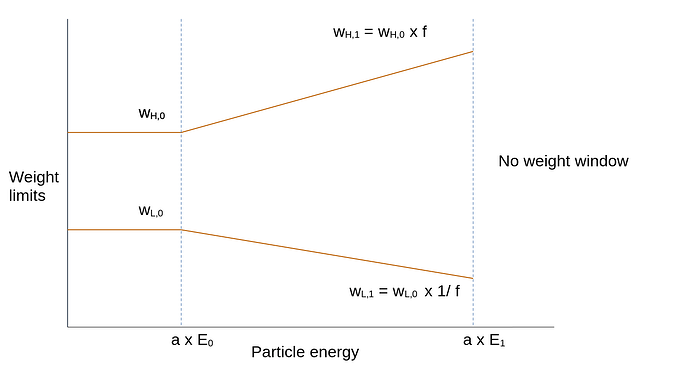Dear Rubi,
- In the activation of the Beryllium target, I get Be-10 and He-6. However, I do not see H-3 as a result of He-6(n,α)H-3. Why is that?
The reaction you describe is not possible, as the number of protons andneutrons before and after is not conserved. Furthermore, even if this reaction were possible, for example Li6(n,\alpha)H-3, in FLUKA you would not see it happen. The reason is that both the neutrons and the Li6 are products of the interaction of the primary particle (in your case the protons) with the Be target. The way FLUKA works, along wth many others if not all Monte Carlo codes, is that the tracked particles, primary or secondary alike, interact with the environment, but not between one another. For this reason, if I understand correctly, the scenario you describe is not possible.
- What value should I put on WHAT(3) of the WW-FACTOr card for each region, and how should I define the WW-THRESh card for photons, electrons, and protons?
Here is a brief explanation for how the WW-FACTOr and WW-THRESh work together to create customizable energy dependent weight windows. I drew this diagram to introduce the notation and the inputs that can be given in those cards, see also the corresponding diagram on slide 28-29 in the advanced FLUKA course :
the weight window is the area between the two orange lines in the diagram. The two cards can be used to specify the shape and position of the window:
*...+....1....+....2....+....3....+....4....+....5....+....6....+....7...+...8
WW-THRESh E_1 E_0 f FROMPART TOPART STEPPART (primary/no_primary)
*...+....1....+....2....+....3....+....4....+....5....+....6....+....7...+...8
WW-FACTOr w_L0 w_H0 a FROMREG TOREG STEPREG (neutron profiles)
the WHAT(5,6,7) are used to specify the particle and the region on which to apply the window biasing. The SDUM is a bit more complicated, but for WW-THRESh it is about applying the window to both primaries and secondaries (default) or only to secondaries. For WW-FACTOr, the numeric SDUM allows to specify the low-energy neutron weight profiles to apply.
To answer your question, WW-FACTOR WHAT(3) specifies a multipliciative factor to be applied to the energy limits specified in WW-THRESh. If you only have one energy interval of interest and you specify it in WW-THRESh, there is no need to set this extra factor. As you can see from the diagram, WW-THRESh allows you to set energy limits of the energy-dependent weight window, as well as how much to amplify the weight limits at the higher end of the energy.
In any case, I suggest looking at the manual for the three cards: BIASING, WW-THRESh, WW-FACTO, which also contain some examples.
I hope this was helpful,
Stefano


